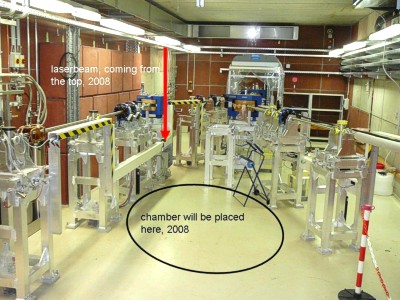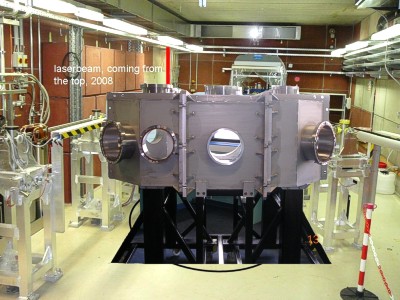 |
|
Strathclyde–Dresden Laser Driven Applications
Funded by SUPA 1, a new programme of work has been established
in 2007 at the Helmholtz-Zentrum
Dresden (HZDR) coupling a 150 TW laser to a 40 MeV linac. In
the picture below is shown the output of the 40 MeV high resolution electron
linac at Dresden.

In the space marked will be placed the ultra-high vacuum chamber built
at Strathclyde with funding from SUPA 1 and shown in the figure below.
This will be shipped in January 2008 with the first experiments being
scheduled for March 2008.

The programme of work which will be carried out by the SUPA team will
include:
• Advanced experimentation to produce the first monoenergetic proton beams of about 20 MeV with specially manufactured targets. Similar experiments will then be carried out to produce monoenergetic heavy ion beams.
• These will be used for the first irradiation of biological material with laser induced proton beams which is the first step to laser driven proton oncology. This will be carried out in collaboration with the clinicians from OncoRay, Dresden Hospitals and University.
• The laser beam will be coupled to the 40 MeV Elbe Linac to produce up to 40 keV backscattered monoenergetic X-rays from laser electron beam interactions for a number of different applications in material science and medical diagnostics.
• The on-site Tandem Accelerator will serve for quantitative verification of the characteristics of the laser induced proton and heavy ion beams.
|
Part of the
Scottish Universities
Physics Alliance (SUPA) and the
Department
of Physics, |
